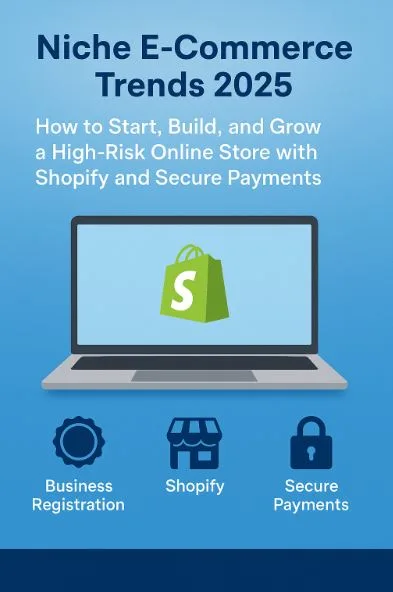The Future of Software Development: Trends Every Business Should Know
Whether you’re selling products, offering services, or building digital platforms, one thing is clear: every company today runs on software. It’s no longer just a “tech thing.” Software development has become the backbone of modern business strategy.
That’s why partnering with a forward-thinking software development company isn’t just about writing code anymore. The right solutions can shape customer experiences, streamline operations, and even create entirely new revenue streams. It’s about staying competitive in a market that changes overnight.
But, is your business really ready for the way software is evolving?
The pace of change isn’t slowing down. In fact, it’s redefining what “staying ahead” even means. For businesses, the question isn’t if these shifts will impact you, but how prepared you are to adapt.
From AI-driven personalization to seamless cloud-based systems, companies that adapt quickly are the ones pulling ahead. In this post, we’ll explore the trends every business should know: not as buzzwords, but as actionable insights you can actually use to future-proof your growth.
Let’s get right into it!
Why Staying Ahead of Software Trends Matters
For most companies today, software isn’t just part of the business; it is the business. Digital solutions have transformed from just a support system to the engine driving growth, customer loyalty, and operational efficiency.
When the tools and platforms you rely on evolve, they don’t just change how your team works; they redefine how your entire business competes in the market.
Whether it’s powering customer-facing platforms, automating internal workflows, or connecting global teams, the right technology decisions can make or break your growth.
The challenge? Software development is evolving at lightning speed. A tool or approach that worked brilliantly two years ago can feel outdated today. Outdated systems slow down processes, create security risks, and make it harder to deliver the seamless digital experiences customers expect.
For modern businesses, staying ahead of software trends isn’t about chasing every shiny new tool. It’s about understanding where technology is headed so you can make smart, strategic moves before the market forces you to.
That’s why we’ve curated a list of key trends to help you stay proactive, build resilience, and turn digital disruption into a growth opportunity.
Key Trends Every Business Should Watch
The software landscape is evolving like never before. What used to be a five-year technology cycle now happens in less than half that time. Businesses that recognize patterns early don’t just save on costs; they set themselves up to capture opportunities their competitors miss.
The following trends are driving the next wave of software innovation, distilled into practical insights your business can put to work.
Trend 1: AI-Fueled Development
AI is no longer a “future tool”. It’s already changing how software is built and maintained. From automated testing to intelligent code suggestions, AI reduces time-to-market and allows teams to focus on solving business problems instead of just writing plain code.
Platforms like ChatGPT, Gemini, Claude, and DeepSeek are moving beyond simple code suggestions to become collaborative partners in development. They can generate boilerplate code in seconds, analyze architecture decisions, and even simulate edge cases before a single line hits production.
Companies leveraging AI in development can deliver features faster and adapt to market shifts without breaking their bank. The competitive edge isn’t having the “smartest” developers. It’s enabling them with AI that makes them 10x faster and more strategic.
Trend 2: Cloud-Native Everything
Cloud-native isn’t just a hosting choice anymore. It’s a business model enabler. AI-powered cloud management tools like AWS CodeWhisperer and Google Cloud Duet AI are automating scaling, deployment, and cost optimization in real-time.
The real benefit is this: brands that build cloud-first can scale up or down instantly without huge upfront investments. Cloud-native approaches let you experiment with new services and enter markets faster without betting the entire budget on infrastructure. Cloud-native + AI turns agility into revenue.
Trend 3: Low-Code & No-Code Revolution
Low-code platforms are evolving fast with AI at their core. Tools like Microsoft Power Platform with Copilot and Bubble’s AI integrations allow non-technical teams to build functional apps through natural language prompts.
Businesses are now spinning up internal dashboards or customer portals in days without touching a line of code. The key is using it for fast iterations and freeing engineering teams to focus on complex, revenue-driving systems.
When used strategically, low-code empowers non-technical teams and frees developers to work on complex, revenue-critical systems. This is one of the key reasons we see so many “Vibe Coders” today.
Trend 4: Security-First Development
AI is playing a critical role in modern software security. As cyber threats are evolving just as fast as technology itself, building security into every stage of software development (instead of patching later) is becoming the new norm.
Platforms like Darktrace and SentinelOne use machine learning to detect anomalies and vulnerabilities during development, not just after deployment. Some companies are integrating AI-driven code scanners into CI/CD pipelines, catching critical issues before they hit production.
By baking AI-powered threat detection into the development lifecycle, companies are preventing million-dollar breaches instead of patching after the fact. Security isn’t a feature; it’s part of the foundation now, and prevention has become a competitive advantage.
Trend 5: API Economy & Interoperability
The rise of AI is making systems talk to each other smarter and faster. Rather than operating in silos, modern-day software leverages APIs to communicate with each other, creating seamless customer experiences and operational efficiency.
With tools like Postman’s AI API builder and MuleSoft’s AI-driven integration assistants, businesses are orchestrating entire digital ecosystems with minimal manual coding.
APIs have evolved from their role as “technical glue” to become full-fledged revenue channels that let you expand services without rebuilding your core systems. Companies that design with AI-driven APIs early avoid data silos and unlock growth opportunities through seamless integrations.
For instance, I’ve known some software development companies in NY that avoided the “data islands” problem by prioritizing integration early. APIs aren’t just connectors; they’re growth multipliers. Remember, If your software can’t play nice with others, it’s already outdated.
Over to You: Making Software a Growth Engine, Not Just a Tool
The software development landscape is evolving faster than we can keep count. From AI-driven development to cloud-native systems and seamless integrations, the companies winning today are the ones treating software as a strategic growth driver, not just a set of tools.
That’s why we curated this list to help you build resilience in a world where digital disruption has become the norm.
Now’s the time to evaluate: is your software helping you stay competitive or holding you back?
Start small, experiment with one of these trends, and turn your tech stack into a true engine for growth. The businesses that adapt early won’t just survive the next wave of innovation, they’ll define it.
If you need additional assistance in navigating through the complex world of software development, feel free to reach out. We’re here to help.
Let’s make your business future-ready!





